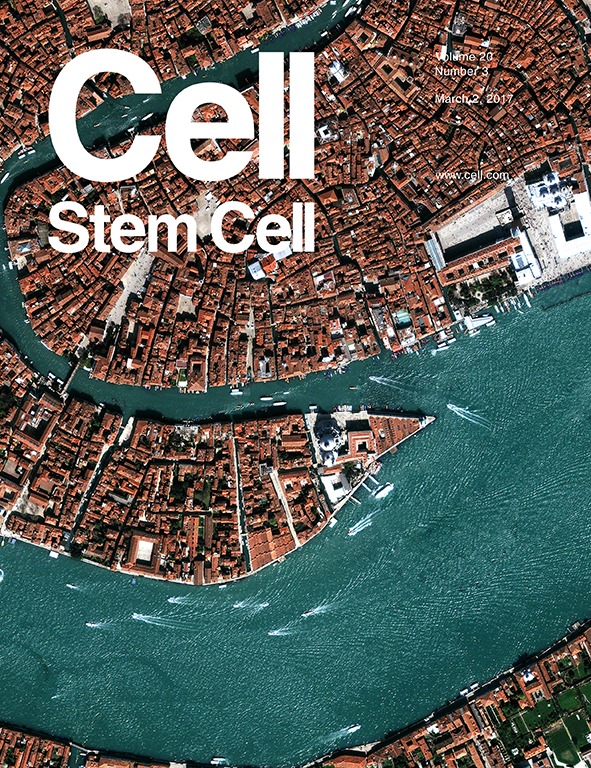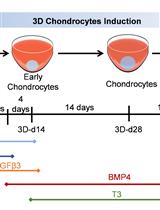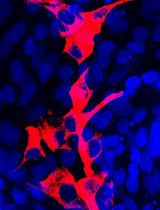- EN - English
- CN - 中文
Small Molecule-Based Retinal Differentiation of Human Embryonic Stem Cells and Induced Pluripotent Stem Cells
基于小分子的人胚胎干细胞和诱导多能干细胞的视网膜分化
发布: 2018年06月20日第8卷第12期 DOI: 10.21769/BioProtoc.2882 浏览次数: 7966
评审: Giusy TornilloDongsheng JiangAnonymous reviewer(s)

相关实验方案

人 iPSC 衍生神经元与少突胶质细胞共培养用于髓鞘形成的小分子筛选分析
Stefanie Elke Chie [...] Maria Consolata Miletta
2025年05月05日 2768 阅读
Abstract
Retinal degeneration leads to loss of light-sensing photoreceptors eventually resulting in vision impairment and impose a heavy burden on both patients and the society. Currently available treatment options are very limited and mainly palliative. Ever since the discovery of human pluripotent stem cell technologies, cell replacement therapy has become a promising therapeutic strategy for these patients and may help restore visual function. Reproducibly generating enriched retinal cells including retinal progenitors and differentiated retinal neurons such as photoreceptors using human embryonic stem (ES) cells and induced pluripotent stem (iPS) cells in a dish is an essential first step for developing stem cell-based therapies. In addition, this will provide a reliable and sufficient supply of human retinal cells for studying the mechanisms of diseases. Here we describe a small molecule-based retinal induction protocol that has been used to generate retinal progenitors and differentiated retinal neurons including photoreceptors from several human ES and iPS cell lines. The retinal cells generated by this protocol can survive and functionally integrate into normal and diseased mouse retinas for several months following subretinal transplantation.
Keywords: Human (人)Background
A number of groups around the world are developing methodologies to generate specific cell types from human pluripotent stem cells. These cells will likely play a critical role in the future of regenerative medicine as a source of replacement cells. These newly generated human cells will be very useful in developing better and more accurate human disease models that can then be used for discovery of novel drugs with better efficacy and safety profiles.
Our work focuses on retinal degenerative diseases such as macular degeneration and retinitis pigmentosa which affect millions of people worldwide. Death of light-sensing photoreceptors in the retina is commonly associated with those diseases and results in severe impairment or total loss of vision. There are no effective medical treatments available to cure those diseases.
Under specific conditions, human ES and iPS cells can be specifically used to generate retinal progenitor cells, and consequentially differentiate into specialized retinal neuronal subtypes (retinal ganglion cells, amacrine cells, bipolar cells, horizontal cells, and photoreceptors) (Osakada et al., 2008 and 2009; Hirami et al., 2009; Lamba et al., 2006, 2009 and 2010; Meyer et al., 2009; Hambright et al., 2012; Zhong et al., 2014). Establishment of effective and chemically-defined protocols to generate retinal progenitors as well as differentiated retinal cell types including photoreceptors from human ES cells and iPS cells is a critical step for developing cell replacement therapies for patients with a variety of incurable retinal degenerative diseases.
Here, we report a detailed small molecule-based retinal induction protocol that has been used to generate retinal cells in vitro and the derived retinal cells were used as donor cells in the transplantation studies carried out by Dr. Lamba’s research group. The derived retinal progenitors and retinal photoreceptors were tested in multiple host mouse lines with and without retinal degeneration conditions and showed the ability to survive and functionally integrate into the host mouse retina following transplantation (Zhu et al., 2017 and 2018).
Materials and Reagents
- 6-well plate (DNase and RNase free, treated) (Greiner Bio One International, catalog number: 657160 )
- Cryogenic vials (Corning, catalog number: 430659 )
- 2 ml serological pipette (VWR, catalog number: 76093-882 )
- 1,000 µl micropipette (VWR, catalog number: 89079-974 )
- 15 ml conical tube (VWR, catalog number: 490001-623 )
- Micropipette tip (VWR, catalog number: 490000-468 )
- Cell scraper (Corning, catalog number: 3008 )
- Sterile Disposable Filter System with PES Membrane (0.22 µm pore size) (Thermo Fisher Scientific, catalog number: 566-0020 )
- Cover glasses (VWR, catalog number: 89015-725 )
- 70% ethanol (Sigma-Aldrich, catalog number: 459836 )
- Matrigel (BD, BD Biosciences, catalog number: 354234 )
- DMEM/F-12 basal medium (GE Healthcare, catalog number: SH30023.02 )
- Essential 8 medium (Thermo Fisher Scientific, catalog number: A2858301 )
- Penicillin Streptomycin Amphotericin B (Lonza, catalog number: 17-745E )
- Lyophilized Y27632 (Stemgent, catalog number: 04-0012 )
- 1x Dulbecco’s phosphate buffered saline (DPBS) without calcium and magnesium (Thermo Fisher Scientific, catalog number: 14190144 )
- 0.1% EDTA (Diluted 1x EDTA in DPBS at 1:1,000) (Corning, catalog number: 46-034-CI )
- Sodium Pyruvate (Corning, catalog number: 25-000-Cl )
- HEPES Buffer (Corning, catalog number: 25-060-CI )
- Sodium Bicarbonate (Corning, catalog number: 25-035-CI )
- Non-essential Amino Acid (Corning, catalog number: 25-025-CI )
- N1 Supplement (Sigma-Aldrich, catalog number: N6530 )
- Fetal Bovine Serum (FBS) (Atlanta Biologicals, catalog number: S11150 )
- KnockOutTM Serum Replacer (KSR) (Thermo Fisher Scientific, catalog number: 10828028 )
- IWR1-endo (Stemgent, catalog number: 04-0010 )
- LDN 193189 (Stemgent, catalog number: 04-0074 )
- Insulin-like growth factor 1 (IGF1) (R&D Systems, catalog number: 291-G1 )
- TrypLE Express dissociation reagent (Thermo Fisher Scientific, catalog number: 12604021 )
- 1x HBSS (Corning, catalog number: 21-022-CM )
- Dimethyl Sulfoxide (DMSO) (Fisher Scientific, catalog number: BP231-1 )
- Poly-D-lysine (Sigma-Aldrich, catalog number: P6407 )
- 4% Paraformaldehyde solution (Electron Microscopy Sciences, catalog number: 157-4 )
- 10% Normal Donkey Serum Blocking Solution (Jackson Immuno Research Laboratories, catalog number: 017-000-001 )
- Triton X-100 (Sigma-Aldrich, catalog number: T8787 )
- Anti-fading Fluoromount G mounting medium (Electron Microscopy Sciences, catalog number: 17984-25 )
- 4',6-diamidino-2-phenylindole (DAPI, Enzo Life Scienes, catalog number: ENZ-52404 )
- Monoclonal mouse anti PAX6 antibody (DHSB, catalog number: PAX6 )
- Polyclonal goat anti LHX2 antibody (Santa Cruz Biotechnology, catalog number: sc-19344 or sc-517243 )
- Biotinylated polyclonal goat anti human OTX2 antibody (R&D Systems, catalog number: BAF1979 )
- Polyclonal Rabbit anti CRX antibody (GeneTex, catalog number: GTX124188 )
- Anti-Recoverin Antibody (EMD Millipore, catalog number: AB5585 )
- Freezing Medium (NSC + 0.5% FBS Medium + 10% DMSO)
- Essential 8 human ESC/iPSC culture medium (see Recipes)
- Rock inhibitor Y-27632 (10 mM, 1,000x, Stemgent, catalog number: 04-0012 ) (see Recipes)
- Neuronal Stem Cell Culture Medium (NSC) (see Recipes)
- NSC + 0.5% FBS Medium (see Recipes)
- ISLI + KSR Retinal Induction Medium (see Recipes)
Equipment
- Vertical laminar flow hood certified for Level II handling of biological materials
- Water bath
- Incubator with humidity and gas control to maintain 37 °C and 95% humidity in an atmosphere of 5% CO2 in air
Note: The incubator needs to be able to adjust the O2 level, as required for Step A4i. - Low-speed centrifuge with a swinging bucket rotor (e.g., Beckman Coulter, model: GS-6 ) with an adaptor for plate holders
- Pipette-aid with appropriate serological pipettes
- Hemocytometer
- Micropipette with appropriate tips
- Mr. Frosty freezing container at room temperature (Thermo Fisher Scientific, catalog number: 5100-0001 )
- -150 °C freezer or liquid nitrogen (LN2) vapor tank
- -80 °C freezer
- -20 °C freezer
- Refrigerator (2-8 °C)
- Inverted microscope
Procedure
文章信息
版权信息
© 2018 The Authors; exclusive licensee Bio-protocol LLC.
如何引用
Zhu, J. and Lamba, D. A. (2018). Small Molecule-Based Retinal Differentiation of Human Embryonic Stem Cells and Induced Pluripotent Stem Cells. Bio-protocol 8(12): e2882. DOI: 10.21769/BioProtoc.2882.
分类
干细胞 > 多能干细胞 > 细胞分化
干细胞 > 胚胎干细胞 > 细胞分化
细胞生物学 > 细胞分离和培养 > 细胞分化
您对这篇实验方法有问题吗?
在此处发布您的问题,我们将邀请本文作者来回答。同时,我们会将您的问题发布到Bio-protocol Exchange,以便寻求社区成员的帮助。
提问指南
+ 问题描述
写下详细的问题描述,包括所有有助于他人回答您问题的信息(例如实验过程、条件和相关图像等)。
Share
Bluesky
X
Copy link










